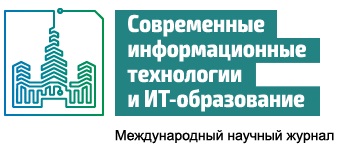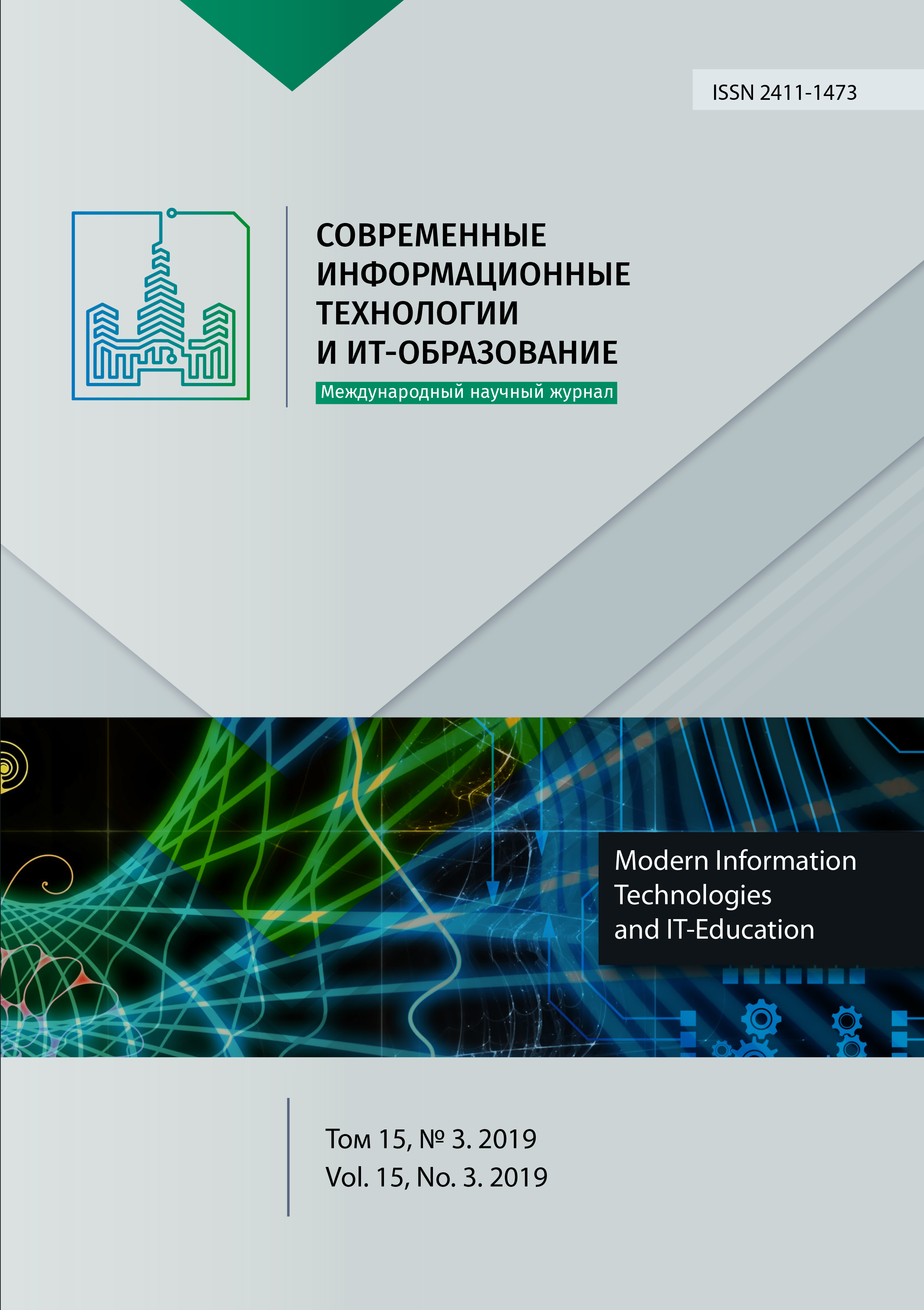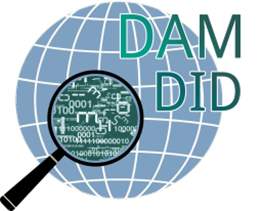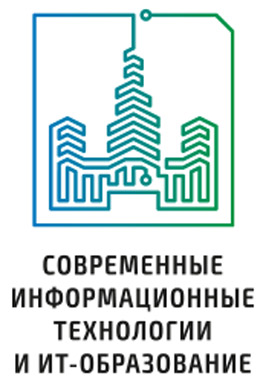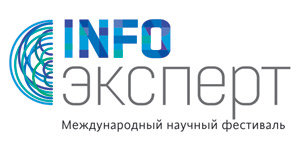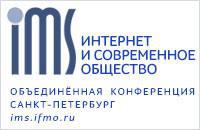Определение структуры информационной системы на основе использования нечеткой логики
Аннотация
В статье рассматривается метод комплексирования сигналов от неравноточных информационных систем, основанный на нечеткой логике, объединяющий два подхода к комплексированию: расчет весовых коэффициентов и отсечение данных с помощью порогового значения. Предлагаемый метод основан на интерпретации основных этапов нечеткого вывода – фаззификации, вычисления результирующей функции принадлежности и дефаззификации, и позволяет одновременно определять режим работы информационных систем (их комплексирование или использование одного из сочетаний, определяемого критериями качества сигналов) и весовые коэффициенты комплексируемых сигналов. Приводятся общая постановка задачи комплексирования и схема комплексирования информационных систем с критериями качества их сигналов. Для оценки качества комплексирования используется критерий среднего квадратического отклонения. Комплексирование рассматривается на примере обработки трех гармонических сигналов, зашумленных белым аддитивным шумом. Для анализа качества комплексирования используются различные варианты зашумления сигналов: все сигналы имеют одинаковый уровень зашумленности; один сигнал имеет уровень в несколько раз больше, чем два другие; у всех сигналов разный уровень зашумленности. Показано, что применение одного из способов комплексирования по отдельности менее эффективно, чем их совместное использование с помощью комплексирования. Статья является продолжением статей [5, 6].
Литература
[2] Braslavskii D.A., Yakubovich A.M. Optimal transformation of signals of certain devices with taking into account errors and rejections. Avtomatika i Telemekhanika = Automation and Remote Control. 1968; 10:128-136. Available at: http://www.mathnet.ru/php/archive.phtml?wshow=paper&jrnid=at&paperid=10726&option_lang=rus (accessed 29.07.2019). (In Russ., abstract in Eng.)
[3] Gilˈbo E.P., Chelpanov I.B. Algorithms for processing redundant data based on their summation with variable weights (review). Pribory i sistemy upravleniya = Instruments and Systems: Control. 1972; 5:13-15. (In Russ.)
[4] Leonenkov A.V. Nechetkoe modelirovanie v srede MATLAB i fuzzyTECH [Fuzzy modelling in the environment of MATLAB and fuzzyTECH]. SPb.: BHV-St. Petersburg, 2003. 736 pp. (In Russ.)
[5] Ponyatsky V.M., Gorin A.V. Signal fusing of unequal accuracy information system based on fuzzy logic. International Journal of Open Information Technologies. 2019; 7(3):25-31. Available at: https://elibrary.ru/item.asp?id=37112821 (accessed 29.07.2019). (In Russ., abstract in Eng.)
[6] Ponyatsky V.M., Gorin A.V. Choosing a mode of operation when fusioning information systems based on fuzzy logic. In: Novikov D.A. (eds) Proceedings of the XIII All-Russian Meeting on Control Problems (Moscow, June 17-20, 2019). IPU RAS, Moscow, 2019, pp. 2445-2450. (In Russ.) DOI: 10.25728/vspu.2019.2445
[7] Ponyatsky V.M., Galangte A.I., Egorov D B., Makaretsky E.A. Selection of images of a useful source of radiation against the background of hindrances by complex criterion. Izvestiya Tula State University. Radio engineering and radio optics. 2013; XIII:131-136. (In Russ.)
[8] Egorov D.B., Ponyatsky V.M., Makaretsky E.A. The Definition of Crossing Trajectories in Se-quence Video Frames. Izvestiya Tula State University. Technical sciences. 2013; 6-2:200-205. Available at: https://elibrary.ru/item.asp?id=21436516 (accessed 29.07.2019). (In Russ., abstract in Eng.)
[9] Pogorelsky S.L., Ponyatsky V.M., Egorov D. B., Makaretsky E. A., Ovchinnikov A.V., Gublin A.S. Complex For Research Of Processings Deo. Izvestiya Tula State University. Technical sciences. 2016; 12-2:135-147. Available at: https://elibrary.ru/item.asp?id=27471903 (accessed 29.07.2019). (In Russ., abstract in Eng.)
[10] Makaretsky E.A., Ponyatsky V.M., Eremin N.N. A method of increase in efficiency of segmentation in the system of tracking traffic flows (article). In: Proceedings of the IX International conference “Recognition-2010”. Optical-electronic devices and devices in the systems of recognition of images, processing of images and symbolical information. KSTU, Kursk, 2010, pp. 39-41. Available at: https://elibrary.ru/item.asp?id=27725926 (accessed 29.07.2019). (In Russ.)
[11] Ponyatsky V.M., Galangte A.I., Makaretsky E.A. Features of design of algorithms of processing of images in television measuring systems. In: Proceedings of the MODELLING of AVIATION SYSTEMS, FGUP “GosNIIAS”, RAS, RFBR, 2011. Vol. 3, pp. 121-127. Available at: https://elibrary.ru/item.asp?id=21000524 (accessed 29.07.2019). (In Russ.)
[12] Pogorelsky S.L., Chinaryov A.V., Semikozov A.M. A Complex Approach to Image Enhance-ment of Television and Infrared Devices. Izvestiya Tula State University. Technical sciences. 2012; 7:291-296. Available at: https://elibrary.ru/item.asp?id=18940853 (accessed 29.07.2019). (In Russ., abstract in Eng.)
[13] Shtovba S.D. Proektirovanie nechetkih sistem sredstvami MATLAB [Design of Fuzzy Systems in MATLAB]. Moscow, Goryachaya Liniya-Telekom, 2007. (In Russ.)
[14] Pegat A. Nechetkoe modelirovanie i upravlenie [Indistinct modeling and the management]. 2nd ed. M.: BINOMIAL. Laboratory of knowledge, 2013. (In Russ.)
[15] Bukhalyov V.A. Optimal'noe sglazhivanie v sistemah so sluchajnoj skachkoobraznoj strukturoj [Optimum smoothing in systems with accidental spasmodic structure]. Moscow, Fizmatlit, 2013. (In Russ.)
[16] Fikhtengolˈts G.M. Kurs differencial'nogo i integral'nogo ischisleniya [Course of Differential and Integral Calculus]. Moscow, Fizmatlit, 2003. (In Russ.)
[17] Buckley J.J., Eslami E. An Introduction to Fuzzy Logic and Fuzzy Sets. Advances in Intelligent and Soft Computing, vol. 13. Heidelberg, New York, Physica-Verl., 2002. (In Eng.) DOI: 10.1007/978-3-7908-1799-7
[18] Cintula P. From Fuzzy Logic to Fuzzy Mathematics. Ph.D.Thesis, Czech Technical University in Prague, Prague, 2004. 147 pp. (In Eng.)
[19] Fuzzy Logic – Algorithms, Techniques and Implementations. E. P. Dadios (ed). IntechOpen, 2012. (In Eng.) DOI: 10.5772/35454
[20] Nguyen H.T., Wu B. Fundamentals of Statistics with Fuzzy Data. Studies in Fuzziness and Soft Computing, vol. 198. Springer-Verlag Berlin Heidelberg, 2006. (In Eng.) DOI: 10.1007/11353492
[21] McNeill F.M., Thro E. Fuzzy Logic: A Practical Approach. London, AP PROFESSIONAL, 1994. (In Eng.)
[22] Chen G., Pham T.T. Introduction to Fuzzy Sets, Fuzzy Logic, and Fuzzy Control Systems. USA: CRC Press, 2001. (In Eng.)
[23] Jin Ya. Advanced Fuzzy Systems Design and Applications. Studies in Fuzziness and Soft Computing, vol. 112. Warsaw: Springer Physica-Verlag, 2003. (In Eng.) DOI: 10.1007/978-3-7908-1771-3
[24] Buckley J.J. Simulating Fuzzy Systems. Studies in Fuzziness and Soft Computing, vol. 171. Warsaw: Springer, 2005. (In Eng.) DOI: 10.1007/b100371
[25] Viertl R. Statistical Methods for Fuzzy Data. New Delhi: WILEY, 2011. (In Eng.)

Это произведение доступно по лицензии Creative Commons «Attribution» («Атрибуция») 4.0 Всемирная.
Редакционная политика журнала основывается на традиционных этических принципах российской научной периодики и строится с учетом этических норм работы редакторов и издателей, закрепленных в Кодексе поведения и руководящих принципах наилучшей практики для редактора журнала (Code of Conduct and Best Practice Guidelines for Journal Editors) и Кодексе поведения для издателя журнала (Code of Conduct for Journal Publishers), разработанных Комитетом по публикационной этике - Committee on Publication Ethics (COPE). В процессе издательской деятельности редколлегия журнала руководствуется международными правилами охраны авторского права, нормами действующего законодательства РФ, международными издательскими стандартами и обязательной ссылке на первоисточник.
Журнал позволяет авторам сохранять авторское право без ограничений. Журнал позволяет авторам сохранить права на публикацию без ограничений.
Издательская политика в области авторского права и архивирования определяются «зеленым цветом» в базе данных SHERPA/RoMEO.
Все статьи распространяются на условиях лицензии Creative Commons «Attribution» («Атрибуция») 4.0 Всемирная, которая позволяет другим использовать, распространять, дополнять эту работу с обязательной ссылкой на оригинальную работу и публикацию в этом журналe.
